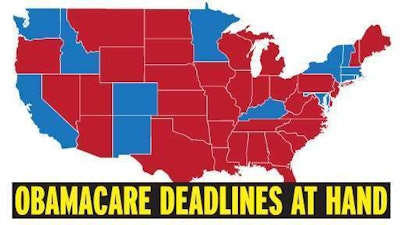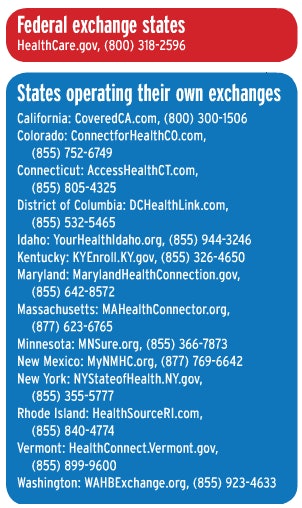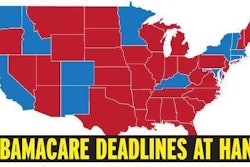
More owner-operators are beginning to reckon with the tax implications of the Affordable Care Act, which will penalize operators who didn’t carry insurance through 2014. The penalty for most will be 1 percent of income, due at tax time.

With average operator income tracking between $50,000 and $60,000 annually, at a certain point, “giving the government an extra $1,000 or more annually just doesn’t make sense,” Zenk says. “We’re getting close to that breaking point.”
Zenk adds that the individual mandate for insurance, if it survives court challenges and changes at the highest levels of government, is an added cost that will have to be offset somewhere else if the independent contractor model in trucking, including the prevalence of one-truck true independents with their own authority, is to survive.
“These are new operating costs. That has to be contemplated as the industry looks at pricing and payment,” he says, and it’s true for both employees and independent contractors. “Employers are having to make new decisions about what to offer to their employee base [in terms of health coverage, with its own costs]. I think it’s very new – this is the first year the ripples are starting to be felt. In the next couple years we’ll see even more of a ripple effect.”
If the ACA remains in place as is, there will be in Zenk’s view an “industry recognition that higher pay needs to be contemplated” as an offset. “Or you could see contractors exiting the industry or reverting back to company status. If you continue to pile on expense to these guys, it makes less and less sense to be an independent contractor.”
And that’s coming, he adds, from a group that is a big supporter of the independent contractor model in trucking in TrueNorth — Zenk’s also part owner/manager of a 30-truck, all-owner-operator-independent-contractor carrier, Iowa-based Swingline Transport.
The final day of the open enrollment period for the health insurance exchanges enabled by the ACA is Sunday, Feb. 15. After that period, only those with a qualifying event or other exception will be able to enroll in qualified health coverage for this year. Zenk, whose company operates a private exchange in the TrueChoices Marketplace geared specifically toward independent contractors and owner-operators generally, says call volume has exploded in recent weeks.
As the ACA has gone into effect, “We’ve tripled our enrollment on the major medical component,” Zenk says, the ACA-compliant coverage they offer. “The volume of calls with contractors seeking information has at least tripled.”
Kari Russell, of the Owner-Operator Independent Drivers Association’s own private exchange, had similar things to say a week back about queries coming in. Enrollments in compliant insurance plans via the exchange were only at around half of the total number of OOIDA members enrolled during the first, 2013-14 open enrollment period. “We certainly expected that we would see larger enrollments,” Russell said last week, just as late activity was beginning to increase.
A variety of factors are at play, including that premium increases for insureds continue to be the reality, though they’re coming at a slower pace than the accelerated increases U.S. citizens of all stripes saw through the 1990s and 2000s, says Zenk “That’s a positive.”
Uncertainty around the law continues, as reported in this story. Early next month the Supreme Court will hear arguments in the King v. Burwell case, which rests on a technicality in the ACA’s language but nonetheless holds the potential to eliminate subsidies for insureds who purchased insurance in one of the federal-exchange states (refer to the red-color-coded states on the map above).
The existence of the subsidies, says Zenk, can in part account for what little slowdown in premium increases has been seen, as subsidies have helped tamp down insurance companies’ risk of covering a pool of those who only need insurance the most.
“The broad range of product offerings really helps, too,” Zenk says.
Both private exchanges from TrueNorth and OOIDA remain open through business hours this week, with benefit advisors able to assist operators in making a decision on insurance this year — or deciding to put it off till the next open enrollment period. Private exchanges are great venues for those who know their Adjusted Gross Income is above the level at which a subsidy would apply. Advisors can help independents figure that out, steering you to the federal or one of the state-administered exchanges if you do qualify for discounted premiums.
 How are you handling health insurance, if at all? If you’re using a mobile device, tap the button to call and weigh in with a message. We’ll round up views in a future podcast. If you’re on a desktop, call 530-408-6423.
How are you handling health insurance, if at all? If you’re using a mobile device, tap the button to call and weigh in with a message. We’ll round up views in a future podcast. If you’re on a desktop, call 530-408-6423.Insurance agents with the ability to sell from the exchanges, such as the one Marc Ballard and the Truckers Insurance Exchange partnered with, reported on at this link, are also options for taking advantage of subsidies that may be available.
Estimates have varied on the percentage of independent contractors and true independents that would qualify for subsidies purchasing insurance on the exchanges, but some have noted a figure as high as 50 percent.
Unlike this year’s three-month enrollment period and the six-month period the year before, the next enrollment term runs only eight weeks, Oct. 15 to Dec. 7, notes OOIDA’s Russell.











